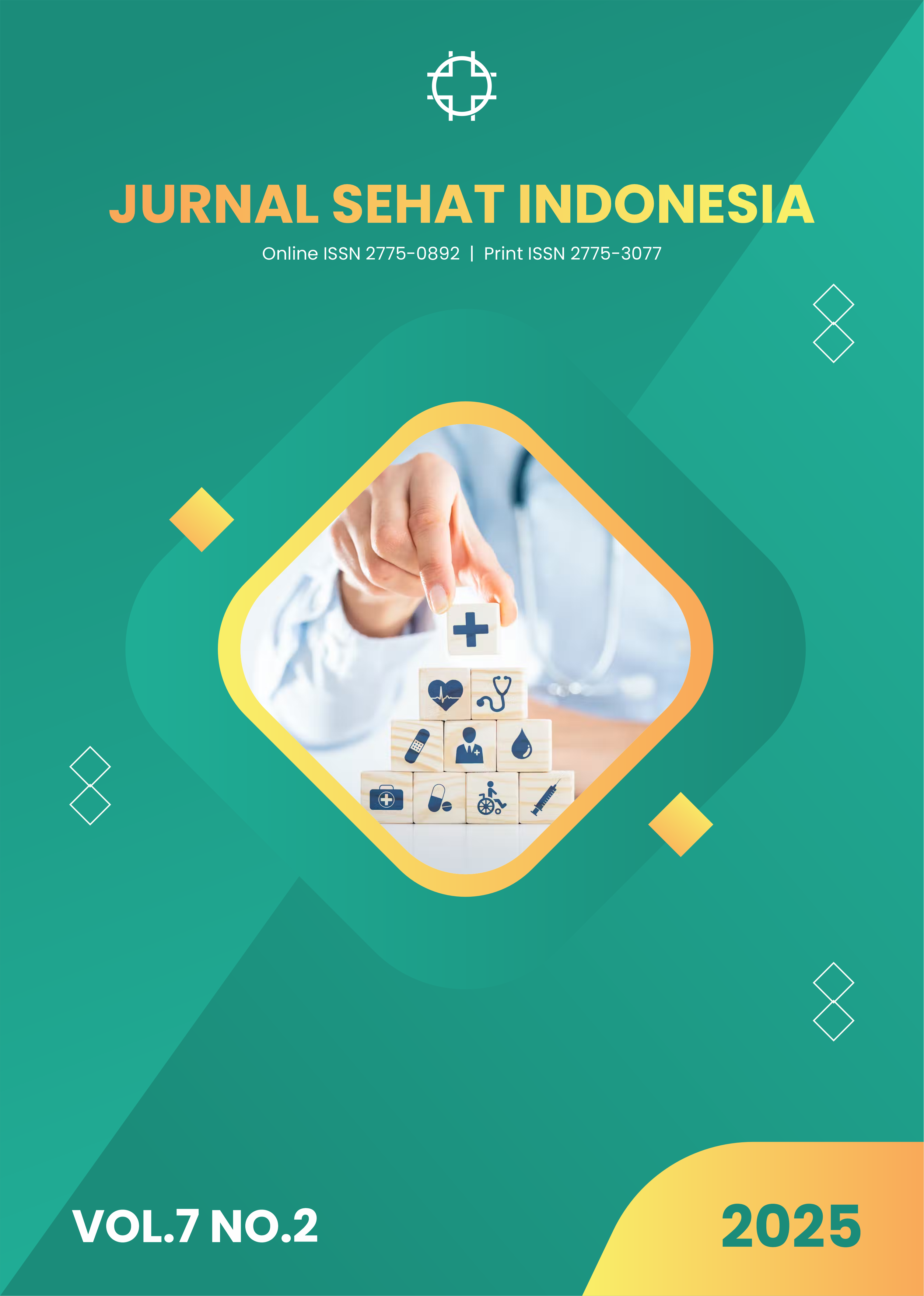Association Between Body Roundness Index (BRI) and Waist-To-Height Ratio (WHTR) to Blood Glucose Levels Among Office Workers in Jakarta
DOI:
https://doi.org/10.59141/.v7i2.359Keywords:
Body Roundness Index, Waist to Height Ratio, blood glucose levels, office workersAbstract
Despite the absence of a statistically significant association between Body Roundness Index (BRI) and Waist-to-Height Ratio (WHtR) with blood glucose levels, this study underscores the practical value of both anthropometric indices as early screening tools for diabetes risk among office workers. The high proportion of participants classified as at risk—64.6% by BRI and 80% by WHtR—indicates a notable prevalence of central obesity, which is a well-established precursor to insulin resistance and hyperglycemia. In workplace health promotion programs, particularly within sedentary environments such as offices, simple, low-cost, and non-invasive tools like BRI and WHtR can facilitate routine screening for metabolic risks. These tools allow health practitioners and occupational health units to identify individuals with increased cardiometabolic risk and recommend timely lifestyle interventions, such as structured physical activity, dietary modifications, and regular glucose monitoring. Moreover, WHtR, which showed a higher sensitivity in this population, may serve as a more practical parameter for large-scale screenings. Given their ease of use and predictive potential, incorporating BRI and WHtR into employee health assessments may significantly enhance early detection and prevention efforts for diabetes mellitus. Future studies could explore their longitudinal predictive accuracy and integration into digital health platforms for continuous monitoring in workplace settings.
Downloads
Downloads
Published
How to Cite
Issue
Section
License
Copyright (c) 2025 Novia Angelina Zuraidy, Vetinly, Yunisa Astiarani

This work is licensed under a Creative Commons Attribution-ShareAlike 4.0 International License.
Authors who publish with this journal agree to the following terms:
- Authors retain copyright and grant the journal right of first publication with the work simultaneously licensed under aCreative Commons Attribution-ShareAlike 4.0 International (CC-BY-SA). that allows others to share the work with an acknowledgement of the work's authorship and initial publication in this journal.
- Authors are able to enter into separate, additional contractual arrangements for the non-exclusive distribution of the journal's published version of the work (e.g., post it to an institutional repository or publish it in a book), with an acknowledgement of its initial publication in this journal.
- Authors are permitted and encouraged to post their work online (e.g., in institutional repositories or on their website) prior to and during the submission process, as it can lead to productive exchanges, as well as earlier and greater citation of published work.








